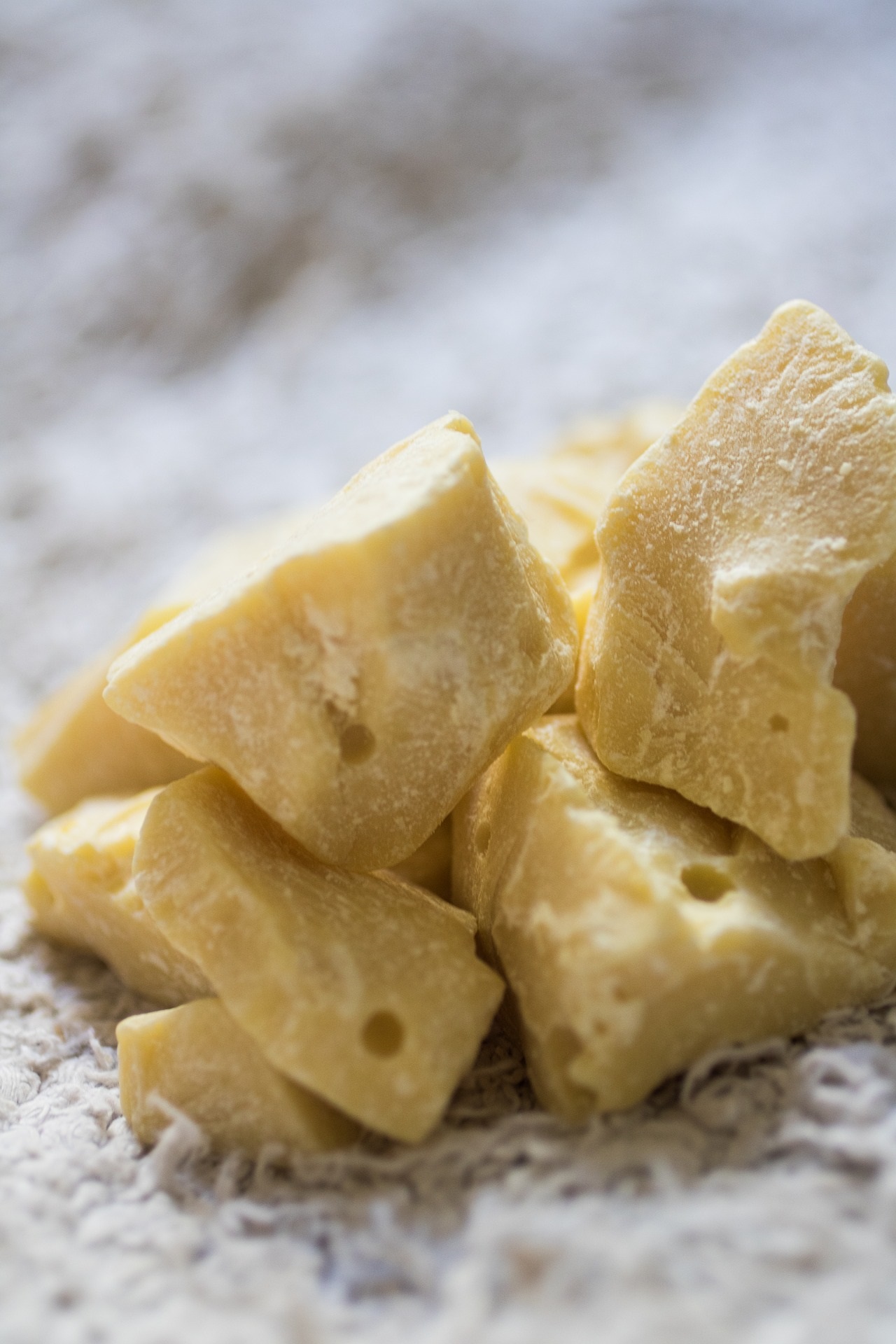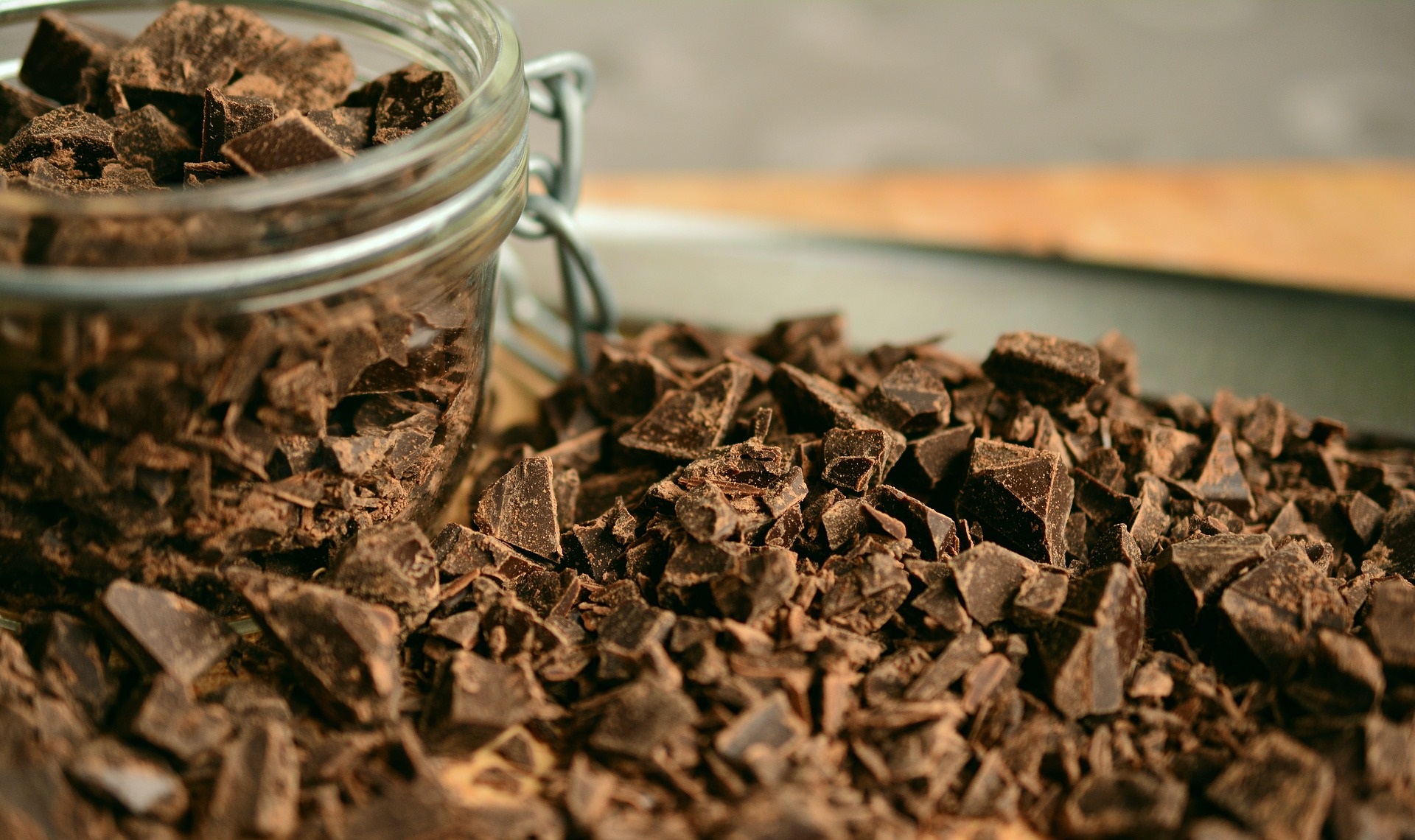
The reasons for the orientation towards cocoa butter replacements are as follows:
1- The production cost of cocoa butter is high and therefore expensive.
2-Because it is a natural substance, there are always changes in the quality of cocoa butter.
3- Tempering is always needed.
4-Chocolates used only cocoa butter have limited stability.
5- Melting properties of cocoa butter are not suitable for all applications and all types of climate.
Classification of Cocoa Butter Substitutes
Cocoa butter substitutes according to their content and properties; cocoa butter equivalents (Cocoa Butter Equivalents, CBEs), cocoa butter replacers (Cocoa Butter Replacers, CBRs) and cocoa butter substitutes (Cocoa Butter Substitutes, CBSs).
Cocoa Butter Equivalents ( Cocoa Butter Equivalents , CBEs )
- Cocoa butter equivalents (CBEs) are identical in terms of physical and chemical properties to those of cocoa butter. They differ from cocoa butter in their aroma properties and are produced from raw materials other than cocoa beans. They are also called non-lauric vegetable oils because they do not contain lauric acid. Some of these oils are obtained by modification methods such as hydrogenation, interesterification and fractionation of vegetable oils.
There are some advantages of using CBEs in chocolates:
1. CBEs are cheaper than cocoa butter and produce more economical chocolate.
2. Increases the product''s tolerance to milk fat.
3. Increases resistance to storage conditions at high temperatures.
4. Supports control of oil flowering
Cocoa Butter Supports ( Cocoa Butter Extenders , CBEXs ):
- Cocoa butter supplements consist of components similar to cocoa butter equivalents, but do not mix with cocoa butter at any rate. In the formulation of cocoa butter, a high proportion of palm medium fraction is used.
Cocoa Butter Developers ( Cocoa Butter Improvers , CBIs ):
- They have similar properties to cocoa butter equivalents, but the amount of solid triglycerides they contain is higher than cocoa butter equivalents. Therefore, they are used in the development of soft cocoa butter.
Cocoa Butter Substitutes ( Cocoa Butter Substitutes , CBSs ):
Cocoa butter analogues are lauric based oils that are completely different from cocoa butter in chemical properties but show some similarities to the cocoa butter physically. It is usually derived from palm kernel and coconut oil. Lauric oils contain on average 40-50% lauric fatty acids (C12) and have low molecular weights. Therefore, lauric CBSs are resistant to oxidative rash. The fatty acid chains of such oils are short. TG compositions are completely different from cocoa butter. Therefore, it can be said that there is a significant mismatch between cocoa butter and GISs. Such oils are produced by hydrogenation, interesterification and fractionation techniques. Using these techniques, the fat shows a wider melting range and the amount of fat increases. Using these methods, products similar to cocoa butter in hardness, mouth feel and aroma can be obtained. They are used as coating material by mixing with low fat content or completely defaced cocoa powder.
Cocoa Butter Substitutes ( Cocoa Butter Replacers , CBRs ):
Cocoa butter equivalents are non-lauric based fats whose TG compositions are completely different from cocoa butter, but are similar to cocoa butter in fatty acid composition. Only small amounts can be mixed with cocoa butter. In the literature, the term cocoa butter analogues (CBSs) are sometimes used instead of cocoa butter substitutes (CBRs). These oils are obtained as a result of hydrogenation and fractionation of oils such as soy, cottonseed, peanut, sunflower and corn oil. That is, these oils are special fractions of hydrogenated vegetable oils. The hydrogenation of these oils is carried out in a controlled manner with trans acids which increase the solid phase amount of the oil.
.
Table : Vegetable oils and plants from which chocolate products can be added
| General names of vegetable fats | Scientific names of plants from which vegetable oils are obtained |
|---|---|
| Illipe, Borneo tallow or Tengkawang | Shorea spp . |
| Palm oil | Elaeis guineensis , Elaeis olifera |
| Sal | Shorea robusta |
| Shea | Butyrospermum parkii |
| Kokum gurgi | Garcinia indica |
| Mango kernel | Mangifera indica |

